#Earthing electrode
Explore tagged Tumblr posts
Text
Top Benefits of Installing Lightning Arresters Commercial Buildings
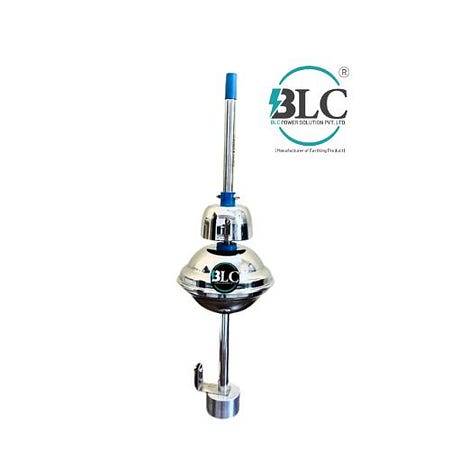
Lightning can cause significant damage to buildings, especially commercial ones that house valuable equipment and critical operations. Installing lightning arresters is an essential step in protecting these structures. Here, we explore the top benefits of installing lightning arresters in commercial buildings, including an overview of different lightning arrester types for building, their working principles, and the importance of this protection.
1. Protection of Electrical Systems and Equipment
Commercial buildings often contain sensitive and expensive electrical systems and equipment. A lightning strike can cause severe damage to these systems, leading to costly repairs and downtime. Lightning arresters protect these systems by diverting the surge of electricity caused by a lightning strike away from the building, thus preventing damage.
2. Safety for Occupants
One of the primary concerns in any building is the safety of its occupants. Lightning strikes can pose a serious risk to anyone inside a building. By installing a lightning arrester for building, you ensure that the structure is equipped to handle such surges, thereby protecting the lives of employees, customers, and visitors.
3. Minimization of Downtime
Commercial buildings often serve as the backbone of business operations. Any downtime caused by lightning-induced damage can result in significant financial losses. By using lightning arresters, businesses can minimize the risk of operational interruptions, ensuring smooth and continuous operations even during thunderstorms.
4. Protection Against Fire Hazards
Lightning strikes can ignite fires, especially in buildings with flammable materials. Lightning arresters reduce the likelihood of such incidents by effectively grounding the electrical surge. This preventive measure is crucial for buildings that store hazardous materials or have complex electrical systems.
5. Cost-Effective Solution
Investing in lightning arresters is a cost-effective solution compared to the potential costs associated with repairing lightning damage. The initial investment in a lightning arrester for building is relatively small when weighed against the potential losses from equipment damage, fire, or business interruptions.
Understanding Lightning Arrester Types for Building
There are several lightning arrester types designed to suit different building needs. The most common types include:
Rod or Franklin Arrester: Consists of a single rod placed on the building to attract and safely dissipate lightning strikes.
Multi-Rod System: Uses multiple rods connected together, providing a higher level of protection for larger buildings.
Faraday Cage: Encloses the building in a metal mesh that disperses the lightning strike over a large area.
Early Streamer Emission (ESE) Arrester: Uses advanced technology to emit an upward streamer that intercepts the lightning strike before it hits the building.
Lightning Arrester Working Principle
The lightning arrester working principle is based on the creation of a low-resistance path to ground for the lightning current. When a lightning strike occurs, the arrester captures the high-voltage surge and directs it safely into the ground. This prevents the surge from passing through the building’s electrical system, thereby protecting the structure and its contents.
Conclusion
Installing lightning arresters in commercial buildings is an essential step in safeguarding the structure, its occupants, and its valuable contents. By understanding the various lightning arrester types and their working principles, building owners can make informed decisions on the best protection strategy. The benefits of reduced downtime, enhanced safety, and cost savings make lightning arresters a wise investment for any commercial property.
0 notes
Text
Type of GI Earthing Electrode.
Earthing electrodes are crucial components in grounding systems, designed to provide a low-resistance path for the dissipation of fault currents to the ground. There are several types of Grounding (GI) electrodes commonly used for earthing purposes:
GI Pipe Electrode:
A galvanized iron (GI) pipe can be used as an earthing electrode. It is typically buried vertically in the ground. The length and diameter of the GI pipe depend on the soil resistivity and the electrical system requirements.
GI Plate Electrode:
A GI plate is another common type of earthing electrode. It is usually buried horizontally in the ground. The size of the plate is determined based on soil resistivity and the specific requirements of the grounding system.
GI Strip Electrode:
Similar to the GI plate, a GI strip can be used as an earthing electrode. The strip is buried horizontally in the ground, and its dimensions are determined based on the grounding system requirements.
GI Electrode with Backfill Compound:
Some grounding electrodes are treated with special backfill compounds to enhance their conductivity and reduce soil resistivity. This helps in achieving lower resistance to earth.
Chemical Earthing Electrode:
In chemical earthing systems, a compound or mixture is used around the electrode to improve conductivity. This type of electrode is designed to maintain a low resistance value over time, even in high-resistivity soils.
Copper-Bonded Electrode:
While not made of pure GI, copper-bonded electrodes have a thin layer of copper bonded to a steel core. This combination provides the benefits of both copper and steel, offering good corrosion resistance and electrical conductivity.
Cast Iron Electrode:
Cast iron electrodes are less common but are used in some specific applications. They are durable and have good corrosion resistance.
The choice of the earthing electrode depends on various factors such as soil resistivity, space availability, local regulations, and the specific requirements of the electrical system. It's essential to consider these factors to ensure an effective and reliable grounding system. Consulting with a qualified electrical engineer or following local electrical codes and standards is recommended when designing and installing an earthing system.
#advanced gel earthing electrode#copper bonded earthing electrode#earthing electrode#earthing strip#galvanized iron#lighting arrester#earthing rod copper
0 notes
Text
Earthing electrode manufacturers in ahmedabad
Earthing- electrodes. We are electrical earthing and earthing material manufacturer and supplier in india.Get contact detailsof earthing electrode in ahmedabad.
#Earthing electrode#Earthing electrode manufacturer#Earthing electrode supplier#Earthing electrode in ahmedabad#Earthing electrode in india
0 notes
Text
Best Chemical Earthing & Lightning Arresters in Noida are provided by True Power under one roof including all World Class Earthing Electrodes and Earthing Accessories.
True Power, an RDSO/CPRI Approved, UL Listed, and NABL accredited Earthing Electrodes, Earthing Accessories, Back Fill Compounds, Polyplastic Earth Pit Covers, Lightning arresters, and Lightning Protection Systems Welcomes You!
Our Maintenance Free Earthing Electrodes, including Pure Copper Earthing Electrodes, Copper Earthing Electrodes, Copper Bonded Earthing Electrodes, GI Earthing Electrodes are the best in the industry."
Contact us: Call us: 8318455691 Email us:[email protected] Address: D 242, Sector 63 Rd, D Block, Sector 63, Noida, Uttar Pradesh 201301 For more information visit: https://www.truepowergroup.in/true-power-noida.html True Power Earthings Private Limited

#Earthing#Copper Earthing#Earthing Electrode#True Power Earthing#Copper Earthing Electrode#Copper Earthing Electrode Manufacturer#Copper#Electrode#True Power#Earthing products#chemical earthing#electrode manufacturer#copper bonded electrode#copper bonded rods#pure copper earthing electrode#gi chemical electrode#manufacturers and suppliers#earth electrode#Earth pit cover#backfill compound#lightning arrester#gi earthing strips#surge arrester#earthing products#installation of earthing products#grounding accessories#copper terminal#inner strips#chemical compounds#chemical earthing price
0 notes
Text

#Earthing contractors in India#copper bonded earthing electrode dealer#Pit cover in Lucknow#Earthing clamp Lucknow
0 notes
Text
Understanding Copper Earthing Electrodes: An Essential Guide to Safety and Efficiency

Veraizen Earthing is a renowned copper earthing electrode manufacturer in India. Copper Earthing Electrodes are also made from Hot Dip Galvanized Pipes, with a copper termination and a 20 mm copper inside the pipe. Copper Earthing Electrodes Suppliers carries a large inventory of copper earthing electrodes, including the electrogrip 60mm 3 metre, electrogrip 40mm 3 metre, electrogrip 50mm 3 metre, electrogrip 80mm 3 metre, electrogrip 90mm 3 metre, and electrogrip 40mm 2 metre pure copper earthing electrode. These Copper Earthing Electrodes are manufactured using cutting-edge technology and high-grade raw materials, resulting in exceptional quality.
What is a Copper Earthing Electrode?
A copper earthing electrode is a conductive rod made primarily of copper, designed to establish a direct electrical connection between the earth and electrical systems. The primary role of these electrodes is to safely dissipate fault currents and static charges into the ground, protecting both equipment and personnel from potential hazards.
Importance of Earthing
Earthing, also known as grounding, is a critical component of electrical safety. It ensures that in case of a fault or short circuit, the excess current is safely diverted into the earth, minimizing the risk of electric shock, equipment damage, and fire hazards. A reliable earthing system is vital for:
Safety: Protecting human lives from electric shocks.
Equipment Longevity: Reducing wear and tear on electrical appliances.
System Stability: Maintaining voltage levels and ensuring smooth operations.
Lightning Protection: Safeguarding structures and equipment from lightning strikes.
Why Copper for Earthing?
Copper has long been the material of choice for earthing electrodes due to its exceptional properties:
High Conductivity: Copper has excellent electrical conductivity, ensuring efficient current dissipation.
Corrosion Resistance: It withstands harsh environmental conditions, providing long-term performance.
Durability: Copper electrodes are less prone to wear and tear, making them a cost-effective solution.
Low Maintenance: Their robustness reduces the need for frequent replacements or maintenance.
Versatility: Suitable for various soil types and applications.
Types of Copper Earthing Electrodes
Copper earthing electrodes come in different forms, catering to diverse requirements:
Solid Copper Electrodes: Made entirely of high-purity copper, these are ideal for highly corrosive environments.
Copper-Bonded Electrodes: Steel rods coated with electrolytic copper, offering a balance between cost and performance.
Chemical Earthing Electrodes: Filled with conductive compounds to enhance performance in areas with high soil resistivity.
Key Features of Copper Earthing Electrodes
Low Earth Resistance: Ensures efficient fault current dissipation.
Anti-Corrosion Properties: Long-lasting performance in various environmental conditions.
Ease of Installation: Lightweight and available in various sizes for convenient installation.
Environmentally Friendly: Non-toxic and recyclable.
Applications of Copper Earthing Electrodes
Copper earthing electrodes are widely used across various sectors, including:
Residential Buildings: Protecting homes from electrical faults and lightning strikes.
Commercial Establishments: Ensuring safety and reliability in offices, malls, and hospitals.
Industrial Facilities: Safeguarding machinery and equipment in factories and plants.
Telecommunication Towers: Providing a stable grounding system for uninterrupted services.
Renewable Energy Systems: Ensuring the safety of solar panels and wind turbines.
Installation and Maintenance
Installing a copper earthing electrode involves:
Site Assessment: Evaluating soil resistivity and environmental conditions.
Electrode Placement: Ensuring optimal depth and positioning for effective grounding.
Backfill Material: Using conductive materials like bentonite or graphite to enhance performance.
Testing: Regular testing to ensure the system maintains low resistance levels.
Maintenance primarily involves periodic inspections and testing to detect and rectify any issues, ensuring the system’s longevity and reliability.
Copper Earthing Electrodes Manufacturers in India
The Biggest copper earthing electrode supplier in India is Veraizen Earthing.We have a good reputation in both the local and international industries due to our strong business ethics and high-quality products like the Copper Earthing Electrode. We ship our stuff all around the world. They are quite popular among our regular clientele because of their long lifespan and affordable cost.We also manufacture and sell copper-bonded solid electrodes, earth rods, solar, and chemical earthing. We Supply Lightning Arrester Manufacturers in Mumbai and Lightning Arrester Manufacturers in Kolkata.
#Copper Earthing Electrodes manufacturers in india#Copper Earthing Electrodes Supplier in india#Copper Earthing Electrodes Suppliers#Lightning Arrester Manufacturers in Mumbai#Lightning Arrester Manufacturers in Kolkata
0 notes
Text
0 notes
Text
"Renown Power Trusted Experts in Earthing & Lightning Protection Systems"
Renown Power offers a range of high-quality earthing products and lightning protection solutions. With a focus on safety and reliability, we ensure that our copper-bonded, GI, and chemical earthing systems protect your property and equipment from electrical faults.
For more info : www.renownpower.com
#Electrical Safety#Earthing Systems#Chemical Earthing#Lightning Protection#Copper-Bonded Electrodes#Industrial Earthing Systems#Lightning Arresters#Earthing Electrodes
0 notes
Text
Pure Copper Bonded Earthing Electrode Manufacturers In Hyderabad
When it comes to electrical safety and grounding solutions, investing in high-quality earthing systems is essential. One of the most efficient solutions is the pure Copper Bonded Earthing Electrode, renowned for its durability and conductivity. If you're in Hyderabad, you can rely on the pure Copper Bonded Earthing Electrode manufacturers in Hyderabad to provide reliable and superior products tailored to your needs.

#Pure Copper Earthing Electrode Manufacturers in Hyderabad#Pure Copper Electrode Manufacturers in Hyderabad#Pure Copper Earth Rod Manufacturers in Hyderabad#Pure Copper Electrodes Manufacturers in Hyderabad#Pure Copper Earthing Rod Manufacturers in Hyderabad#Pure Copper Chemical Electrode Manufacturers in Hyderabad#Pure Copper Earthing Electrode Suppliers in Hyderabad#Pure Copper Electrode Suppliers in Hyderabad#Pure Copper Earth Rod Suppliers in Hyderabad#Pure Copper Electrodes Suppliers in Hyderabad#Pure Copper Earthing Rod Suppliers in Hyderabad#Pure Copper Chemical Electrode Suppliers in Hyderabad
0 notes
Text
What is the Earthing Electrode?
Kasaku's range of advanced gel earthing electrodes are designed to offer superior performance and durability. These electrodes are made from galvanized iron, which provides excellent corrosion resistance, ensuring long-lasting protection against environmental factors. What sets Kasaku's earthing electrodes apart is their innovative design and construction. The use of high-grade materials coupled with advanced engineering techniques results in earthing electrodes that have low resistance levels, allowing for efficient dissipation of fault currents. Another notable feature of Kasaku's earthing electrodes is their easy installation process. With their user-friendly design, these products can be quickly and securely installed without requiring extensive technical knowledge or specialized tools. In addition to providing reliable grounding solutions for residential buildings, Kasaku also caters to industrial sectors where electrical safety is paramount. Their copper bonded earthing electrode is specifically engineered to meet the rigorous demands of industrial environments while offering enhanced conductivity and longevity. With its commitment to quality and customer satisfaction, it comes as no surprise that Kasaku Electricals has gained a strong reputation in the market. Their team of experts ensures that every product meets industry standards while delivering unmatched performance. Whether you're an individual homeowner or a business owner looking for effective grounding solutions, consider choosing Kasaku Electricals' diverse range of earthing electrodes. With their exceptional quality and reliability, you can have peace of mind knowing that your electrical systems are well-protected against faults and potential dangers.
#advanced gel earthing electrode#copper bonded earthing electrode#earthing electrode#earthing strip#galvanized iron#lighting arrester#earthing rod copper
0 notes
Text
Ensuring Safety with Chemical Earthing and Lightning Protection Systems
Comprehensive Earthing and Lightning Protection Solutions for Safe Installations
When it comes to ensuring the safety of your home or commercial building, proper earthing and lightning protection systems are essential. As a leading chemical earthing manufacturer, Rig Earthing provides top-notch products and services designed to keep your electrical systems safe from hazards. With a variety of earthing solutions, including GI earthing electrode and chemical earthing electrode, we are committed to delivering reliable and long-lasting grounding systems for all types of installations.
Why Chemical Earthing is Important
As a chemical earthing manufacturer, Rig Earthing understands the importance of using high-quality materials and advanced techniques to achieve efficient grounding. Chemical earthing involves using electrodes embedded in a conductive backfill compound that ensures low resistance and long-term stability. This makes chemical earthing particularly effective for installations in both residential and commercial buildings.
GI Earthing Electrode for Enhanced Safety
Our GI earthing electrode is designed to offer superior conductivity and durability. It is manufactured using high-grade galvanized iron, which helps in efficient dissipation of fault currents into the ground. Whether it’s for a large industrial facility or a small home, using a GI earthing electrode ensures that your electrical system is well-protected from potential hazards.
Complete Lightning Protection with Rig Earthing
In addition to earthing solutions, Rig Earthing also specializes in lightning protection systems. We offer a range of products to protect your building from the dangers of lightning, including lightning arrester systems and the more advanced ESE lightning arrester (Early Streamer Emission).
The ESE lightning arrester is a proactive solution that offers an extended area of protection by emitting an upward streamer before the lightning strikes. This makes it highly effective for larger buildings and open areas, where regular lightning arresters may not be as efficient.
Choosing the Right Lightning Protection System
When it comes to safeguarding your building, it’s essential to have a proper lightning protection system in place. Rig Earthing provides both conventional and ESE systems, ensuring that we meet all types of customer requirements. Whether you need a conventional lightning arrester for simple protection or an advanced system, we have you covered. Our conventional lightning arrester is a tried-and-tested solution, offering reliable protection against lightning strikes by directing the surge safely into the ground.
For buildings that require more comprehensive coverage, our building lightning arrester systems are designed to provide maximum safety. These systems ensure that any lightning strike is directed away from the structure, minimizing damage and protecting both the building and its occupants.
High-Quality Chemical Earthing Electrodes
When it comes to selecting the right earthing solution, our chemical earthing electrode offers unparalleled efficiency. Designed to provide consistent performance, these electrodes are used in various applications, from small homes to large-scale industrial complexes. At Rig Earthing, we ensure that each chemical earthing electrode is manufactured to the highest standards, ensuring long-term safety and durability.
Trustworthy Chemical Earthing Supplier
As a leading chemical earthing supplier, we understand the diverse needs of our customers. Whether you're looking for a custom earthing solution for your home or a large-scale industrial earthing system, Rig Earthing is the go-to source. We pride ourselves on being a reliable chemical earthing supplier, offering top-notch products that deliver safety and efficiency.
Why Choose Rig Earthing?
With years of experience in manufacturing and supplying earthing and lightning protection systems, Rig Earthing has built a strong reputation for delivering quality products. From the best GI earthing electrode to advanced ESE lightning arrester solutions, we offer a range of services that ensure optimal safety for your electrical installations. Additionally, our products come with warranties, ensuring long-term protection and peace of mind.
Conclusion
Choosing the right earthing and lightning protection system is crucial for ensuring the safety of your electrical installations. Whether you're looking for a chemical earthing manufacturer or need a reliable lightning protection system, Rig Earthing is here to provide expert solutions tailored to your specific needs. Visit Rig Earthing today to explore our full range of products and services designed to protect your home, business, or industrial site.
#gi chemical earthing electrode#ese lightning arrester#best chemical earthing electrode in coimbatore#best lightning arrester in coimbatore#copper chemical earthing
0 notes
Text
Chemical Earthing & Lightning Arrester Manufacturers in Noida-True Power India’s №1

We are Lightning Arrester Manufacturers & Lightning Arrester Suppliers. We have Lightning Arrester Dealers in Noida too.
True Power RDSO/CPRI Approved, UL Listed, and NABL accredited Earthing Electrodes, Earthing Accessories, Back Fill Compounds, Polyplastic Earth Pit Covers, Lightning arresters, and Lightning Protection Systems are manufactured in compliance with national and international standards.
These Maintenance Free Earthing Electrodes, including Pure Copper Earthing Electrode, Copper Earthing Electrodes, Copper Bonded Earthing Electrodes, GI Earthing Electrodes, Back Fill Compounds, and Earthing Pit Covers, are the most relied Earthing Electrodes across industries, Govt. Sectors, PSUs, and the Private sector.
Our Lightning Protection Systems, with more than a Lakh installation using Copper Lightning Arresters, Surge Arresters, Chemical Earthing, Earthing Strip, GI Earthing Strip, and other True Power Earthing Equipment & Accessories, have become a must for every installation, home, office, building, and all structures.

Types of Lightning Arrester in Noida

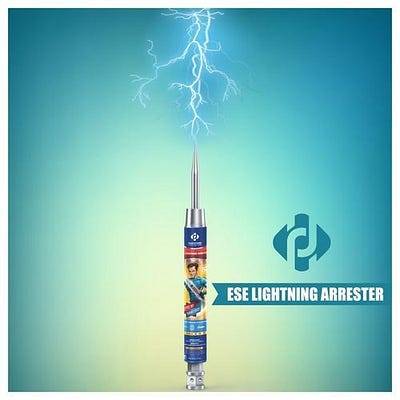

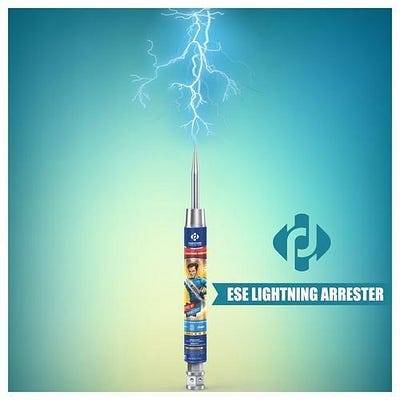
Chemical Earthing & Lightning Arresters Suppliers in Noida with the Best Prices, Extended Warranty, and Longer Service Life.
True Power, the renowned Chemical Earthing & Lightning Protection Solution provider, is the Best Lightning Arrester Supplier in Noida .
We supply all types of Maintenance Free Chemical Earthing Electrodes and Back Fill Compounds to help get correct earth resistivity.
Our Lightning Protection Systems using ESE Lightning Arresters and Copper Lightning Arresters provide 360-degree protection around our installed Lightning Arresters.
Our Back Fill Compounds are the best Earth Enhancing Back Fill Compounds and provide a stable and Low-resistance earthing for years, no matter where they are used.
Earth Pit Covers are a must for all types of earthing to protect the installed earthing from vandalism, connecting earthing strips, adding aesthetics, or preventing theft.

True Power Chemical Earthing & Lightning Protection System Advantages. Why it has become a must for every Installation?
Chemical Earthing provides a Stable Low Resistance Earthing throughout its service Life.
It is Maintenance free and doesn’t require any addition of chemicals or water.
Our Chemical Earthing Back Fill Compound neither corrodes the soil nor spoils the groundwater.
Lightning Protection System Protects your Property, Structure, and Lives from Lightning Strikes.
ESE Lightning Arresters with better protection coverage are better than Copper Lightning Arresters.
It’s our responsiblity to provide adequate safety cover to ourselves and all our surroundings.

Thank You Clients for sending us Your Valuable Feedback

Features we provide
Affordable Prices to meet all Budgets
We are known for our Pre-sales Service and the Best Prices.
Under One Roof Complete Solutions
We Manufacture all from Main Products to accessories.
Assurance of 50+ Approvals from Central & State Govt
We are RDSO/CPRI Approved,UL Listed & RoHS Compliant
Prompt Response without fail
We are a customer-oriented company and reply within 24 hours.
Customised Solutions for all
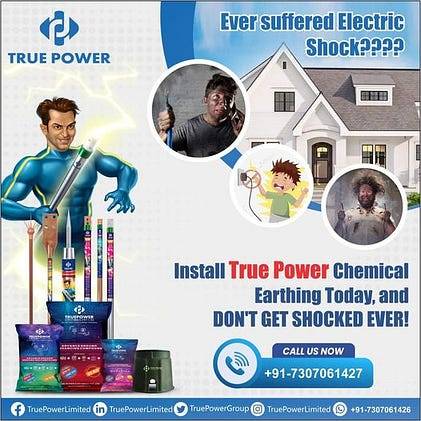
Contact us:
Call us: 8318455691
Email us:[email protected]
Address: D 242, Sector 63 Rd, D Block, Sector 63, Noida, Uttar Pradesh 201301
For more information visit: https://www.truepowergroup.in/earthing-electrode.html
True Power Earthings Private Limited
#earthing equipment#Earthing Accessory#Earthing Electrode#Maintenance Free Earthing Electrode#Copper Bonded Earthing Electrode#Copper Bonded Electrode#Pure Copper Earthing Electrode#Copper Earthing Electrode#GI Earthing Electrode#Galvanized Iron Earthing Electrode#Gel Safe Earthing Electrode#Maintenance Free Earthing#Maintenance Free Chemical Earthing Electrode#Maintenance Free Electrode Earthing#Gel Earthing Rod#Chemical Earthing#Alloy Electrode#Oil Industry Alloy Electrode#Lightning Arresters#ESE Lightning Arrester#Lightning Protection System#Copper Lightning Arrester#Surge Arresters#Earthing Pit Cover#Polyplastic Earth Pit Cover#FRP Earth Pit Cover#Earth Pit#FRP Earth Pit Chamber#Copper Electrode#Earthing Equipment & Accessories
0 notes
Text
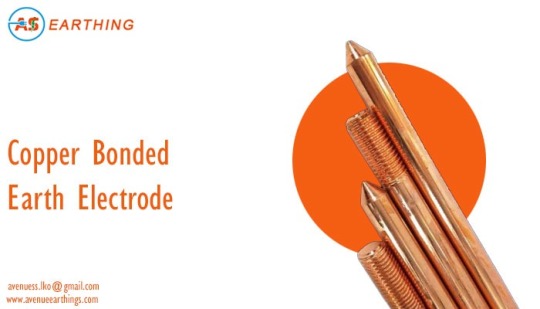
#Copper bonded earth electrode#Earthing material supplier in India#Earthing clamps and couplers in India#Ese lightning protection system Lucknow#Conventional lightning arrester India
0 notes
Text
Top Quality Copper Earthing Electrode Manufacturer in India

Veraizen Earthing is a well-known copper earthing electrode manufacturer in India. Copper Earthing Electrodes are also constructed from hot dip galvanized pipes, with a copper termination and a 20 mm copper interior. Copper Earthing Electrodes Suppliers has a big inventory of copper earthing electrodes, such as the electrogrip 60mm 3 meter, electrogrip 40mm 3 metre, electrogrip 50mm 3 metre, electrogrip 80mm 3 metre, electrogrip 90mm 3 metre, and electrogrip 40mm 2 metre pure copper earthing electrode. These Copper Earthing Electrodes are made using cutting-edge technology and high-quality raw materials, resulting in remarkable performance.
The top copper earthing electrode supplier in India is Veraizen Earthing.We have an excellent reputation in both the domestic and international sectors because of our strong business ethics and high-quality products, such as the Copper Earthing Electrode. We ship our products all over the world. They are quite popular among our regular clients due to their extended lifespan and low cost.We also produce and sell copper-bonded solid electrodes, earth rods, solar, and chemical earthing. We Supply Lightning Arrester Manufacturers in Mumbai and Lightning Arrester Manufacturers in Kolkata.
#Copper Earthing Electrodes manufacturers in india#Copper Earthing Electrodes Supplier in india#Copper Earthing Electrodes Suppliers#Lightning Arrester Manufacturers in Mumbai#Lightning Arrester Manufacturers in Kolkata
0 notes
Text
0 notes